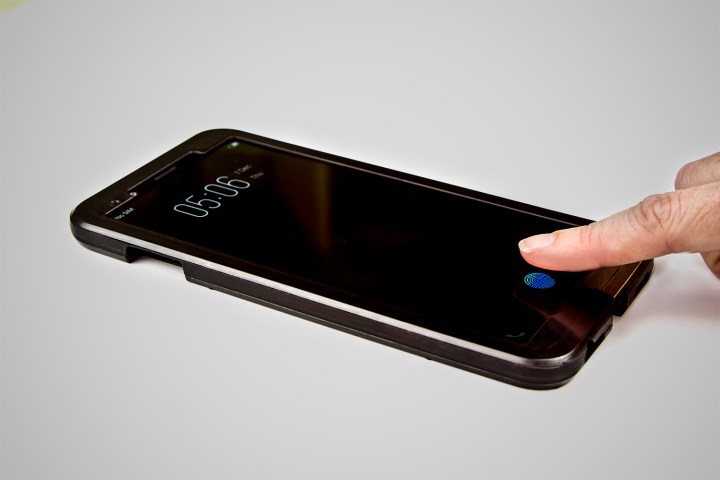
As smartphone manufacturers shrink the bezels around a screen, there’s less space for a fingerprint sensor on the front of the phone. Fingerprint sensors are used to unlock smartphones, and even access sensitive content like a banking app. Many Android manufacturers place these sensors on the back of the phone, so it doesn’t affect the bezel-less trend. Some — like OnePlus, LG, and Samsung — offer facial unlocking technology via the selfie camera.
The sensor is two times faster than 3D facial recognition.
With the iPhone X, Apple went all in on Face ID, going so far as to remove its fingerprint technology, Touch ID. The move has led analysts to believe more Android manufacturers will invest in facial-recognition 3D cameras next year. Synaptics thinks both rear fingerprint sensors and facial unlocking technology are not ideal. If your phone is sitting on a table, you have to pick it up to access the rear fingerprint sensor — the same is true to have it recognize your face. Apple’s Face ID also caused the iPhone X to have an “irregular-shaped display,” also known as the “notch,” to cram the tech in.
Synaptics’ Clear ID FS9500 is a mass-production-ready sensor the company will sell to smartphone manufacturers. It works under OLED displays, which most flagship smartphones use, and it’s quite different from a traditional sensor. The fingerprint sensor on your phone now is capacitive, using electric current to capture your imprint. Clear ID is an ultra-thin optical sensor that captures your print with light emitting from the OLED panel on the smartphone.
The full process works like this: The sensor detects the finger, the OLED display lights up the finger, the sensor scans the fingerprint, and the “matcher” verifies the image and confirms the imprint is yours, granting you access. The sensor can be placed anywhere on the screen the manufacturer wants, though Synaptics offers some general guidelines.
The Clear ID sensor can work on rigid or flexible displays, and the company told Digital Trends it should work even if the phone has a screen protector, or if the screen is wet. Synaptics said the sensor is two times faster than 3D facial recognition, unlocking at about 7 milliseconds — that’s on par with traditional fingerprint sensors today.
It’s unclear just how secure this under-glass fingerprint sensor is compared to present-day sensors, but Synaptics claims a 99 percent spoof attack rejection rate. It said the technology uses machine learning to help verify when there’s an attempted spoof taking place. We’ll have to test those claims when Clear ID makes its way into smartphones.

When will that happen? Soon — the company is working with a top five smartphone manufacturer to integrate the Clear ID sensor into a bezel-less phone in 2018. Synaptics isn’t alone in this race. Qualcomm has already unveiled under-glass fingerprint scanners that utilize ultrasonic techology, and Apple was rumored to be working on similar technology in the lead up to the iPhone 8.
Synaptics will demo Clear ID at CES in January 2018.
Editors' Recommendations
- Does the iPhone 14 have a fingerprint sensor? Here’s what happened to Touch ID
- I hope the iPhone 13 has a fingerprint sensor as good as the Galaxy S21’s
- In-display fingerprint sensors are coming to cheap phones with LCD screens

